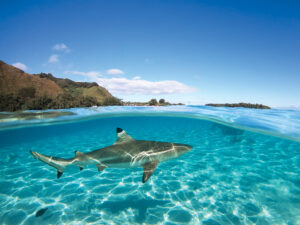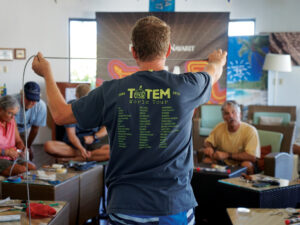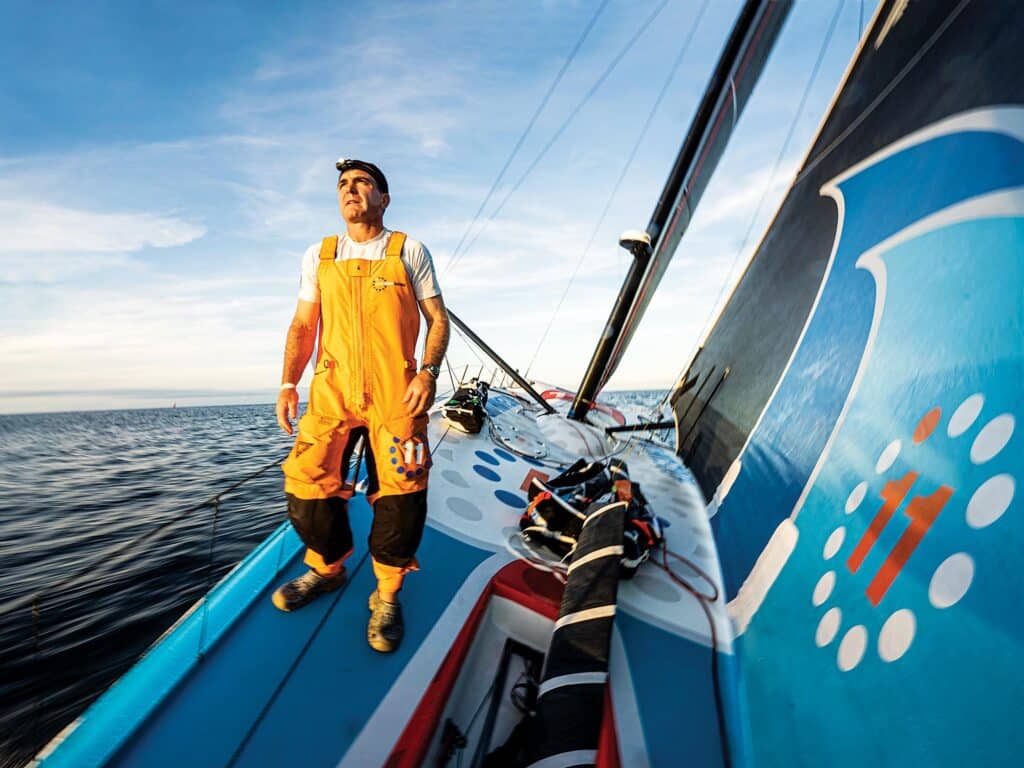
On March 11, skipper Charlie Enright and his 11th Hour Racing Team sailed a staggering 586.36 nautical miles in a 24-hour push aboard their IMOCA 60 Mālama. The team was in the wind-swept depths of the Southern Ocean, west of Australia’s Cape Leeuwin, en route from Cape Town, South Africa. It was headed to Itajaí, Brazil, on The Ocean Race’s mammoth 12,750-nautical-mile Leg Three, and conditions were perfect. In fact, the team temporarily owned the unofficial 24-hour world record for a crewed IMOCA 60, but its pace was bettered some 24 hours later by skipper Kevin Escoffier and his HOLCIM-PRB team (it’s now 595.26 nautical miles). Records aside, there’s a difference between these two monohulls that’s far more important: impact quantification. It will affect far more than speed across a few nautical miles. It has the potential to change the future of sailing, and that of humanity.
The 11th Hour Racing Team’s website summarizes the team’s goals for this year’s race: “The only thing more important than winning is leaving a positive impact.” Achieving that goal began with Mālama’s design and build process, the latter of which took place at CDK Technologies in Port La Forêt, France. The team worked alongside the global-sustainability firm Anthesis Group to optimize the MarineShift360 life-cycle assessment tool. It’s specific to the marine industry, and it can model carbon footprints, water-consumption requirements, and greenhouse-gas emissions for different design and build options.
MarineShift360 is now publicly available online, giving owners, designers, naval architects, project managers, and production-boat builders a way to look at how materials, construction methods, energy sources, and more might lower the impact of a new build or a refit. As more people use MarineShift360, their data is imported into its growing database, making the tool even stronger.
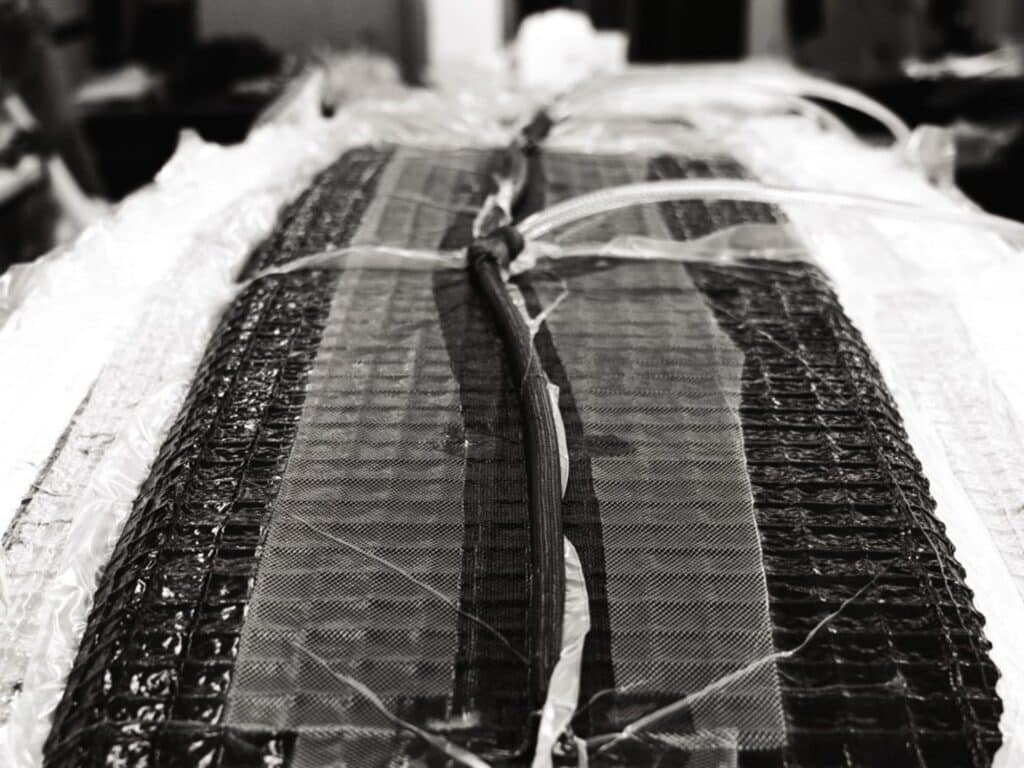
“The MarineShift360 tool isn’t specific to the racing sector. It’s very much for the broader marine sector,” says Damian Foxall, 11th Hour Racing’s sustainability program manager (and a six-time Volvo Ocean Race veteran). “It’s based on a standard LCA inventory, which is used by multiple industries, and then it’s been improved through specific pilot-user input.”
Users can choose among three subscriptions available for MarineShift360: free, professional and enterprise.
“Free users are limited to creating a single project and single assessment, so they could model a single component, like a hull, for instance, but they would not be able to model the complete boat or compare the impact of using different materials in the construction,” says Ollie Taylor, associate director at Anthesis Group. “If you wanted to understand the complete cradle-to-grave impact of your vessel, you would need to purchase one of the subscription options.”
All three versions are based around a deep list of information prompts—either drop-down menus or fields where metrics can be entered—that numerically describe the project. These information prompts vary, depending on the project’s size, type and construction methodology. They range from the specific materials and quantities to the sources and quantities of electricity, gas, and water required to produce the raw material and transform it into a finished product.
Impact quantification will affect far more than speed across a few nautical miles. It has the potential to change the future of sailing, and that of humanity.
While the hull material represents boatbuilding’s single biggest environmental impact, there are plenty of other important impact sources to consider, such as resins, metals, rare minerals, and coatings and paints.
“It is a simple enough process, collating the input data from the manufacturer, but it is an intensive undertaking,” Foxall says, adding that the tool can be used by everyday boaters as well as corporate sustainability officers who can likely realize added benefits (read: preparing your own taxes versus hiring an accountant). “The results are only going to be as good as the data that you put into it.”
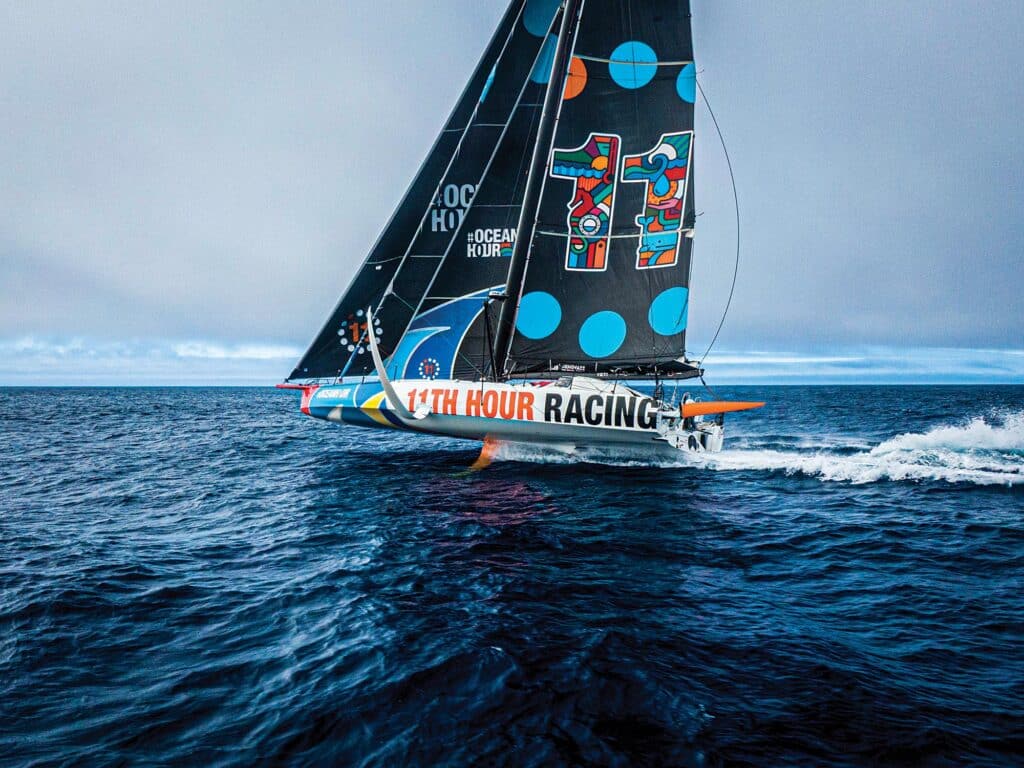
Once these values are imported, the system calculates impacting factors, including greenhouse-gas emissions, electricity consumption, water use and waste percentages. Users can then adjust their input variables to identify the project’s environmental hotspots.
“Any single decision that you make will have a knock-on effect,” Foxall says. “This is where the LCA tool is really useful because it will take into account the overall process.”
While greenhouse-gas emissions drive much of the environmental conversation, MarineShift360 can also quantify other impacts. This includes the water that’s used directly in the manufacturing plant and—if the right data has been imported into the database—the water consumed to grow trees, flax and other organic materials, which are then shipped to a different area to be incorporated into a manufactured product.
It’s important to use multiple indicators. There’s no single perfect solution to this. It really depends on finding the right balance. We need to look at all of these issues through multiple lenses.
For example, carbon fiber has one of the heaviest CO2e and energy-consumption footprints of all contemporary boatbuilding materials; however, its consumed-water footprint is significantly less than that of flax or wood. So if someone looked at a proposed project only through the lens of water consumption, rather than studying the big-picture impacts, information would be missing.
“This is why it’s so important to use multiple indicators,” Foxall says. “There’s no single perfect solution to any of this, and it really depends on finding the right balance. We need to look at all of these issues through multiple lenses.”
Foxall also says that it’s essential to focus on the owner’s (or boatbuilder’s) goals and values for the project. Key criteria need to be defined.
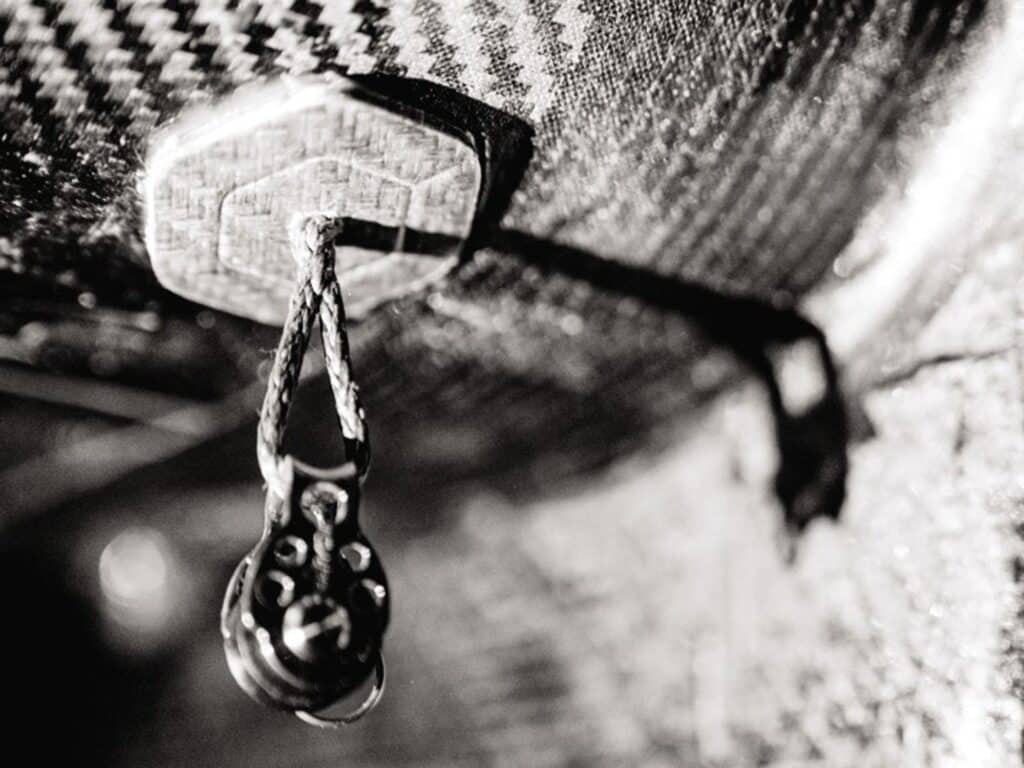
“What do we think are important in the decision-making process?” he says, pointing as an example to the choice between plastic bottles and glass jars. The former may be made from oil, but the latter has a higher carbon footprint, given the amount of energy required for its production and transportation. “I think we all prefer to use glass bottles to plastic bottles, but if you were to purely look at it through a carbon-emissions lens, you wouldn’t come to that conclusion. So again, it’s about understanding what lens we’re using and why we are making the decisions.”
One of the most important decisions involves deciding whether to build something new or to reuse something. MarineShift360 uses a 100+0 model for this equation. The original owner effectively owns 100 percent of the project’s environmental impacts, while secondhand buyers enjoy an impact-free boat (excluding any refitting work). This can be a consideration for anyone who is debating building a new yacht versus refitting.
This is also where the words “quality” and “durability” enter the conversation. Few people will waste time or treasure refitting an old, cheaply built boat, but brokers typically don’t have to work too hard to sell an older, higher-quality build.
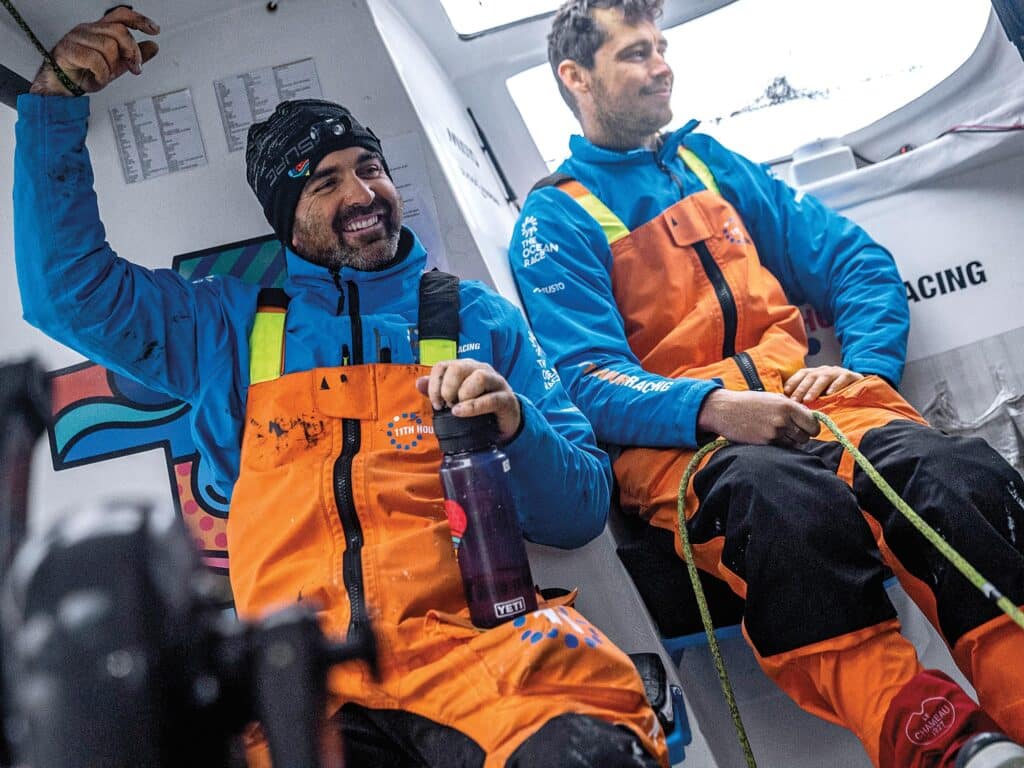
“The next lens to use is ‘better,’” Foxall says. “Better might mean a better manufacturing process, where we’re using fewer disposables.” It could also mean using recycled carbon fiber in molds, adding higher-quality materials, and leveraging as much renewable energy and recycled materials as possible.
Production-boat builders may have different goals and values than an individual building her dream cruising yacht, but larger-scale operations can often magnify impact reductions beyond what a single yacht could ever realize.
As an example, Foxall says, production lines can switch to reusable silicone bagging from single-use plastic-intensive vacuum bagging. Or they can build a high-quality mold for hundreds, possibly thousands, of use cycles.
“The LCA tool allows you to describe what you are building and the process associated with it, within the context of the manufacturing site, allowing you to make smart decisions,” Foxall says.
While the benefits associated with the MarineShift360 LCA tool are obvious, there are some inherent challenges. As Foxall mentioned, the results hinge on the quality of the data that’s entered and how granularly accurate the information is. For example, are generic numbers being used to describe a piece of equipment? Or has the equipment’s manufacturer supplied exact metrics?
“In an LCA process, you’re always going to have a certain amount of averaging and best-available data,” Foxall says. “What is important is to establish a consistent reference point.”
As more users supply MarineShift360 with accurate metrics, the tool should continue to become more accurate. So if you’re considering building a new boat or refitting an existing hull, start entering the data that describes your dream. Odds are excellent that you will improve your project and that your great-great-great grandchildren will thank you.
And, as evidenced by Mālama’simpressive run, you won’t have to sacrifice speed, performance or offshore capabilities.
“At the end of the day, the LCA is just a number,” Foxall says. “The question is: What do you do with that number?”
David Schmidt is a lifelong sailor and writer. He has worked with Cruising World since 2015, he regularly contributes to Yachting and Sailing World, he’s the North American editor of sail-world.com, and he’s a sailing contributor to The New York Times. He and his wife live in Bellingham, Washington.

